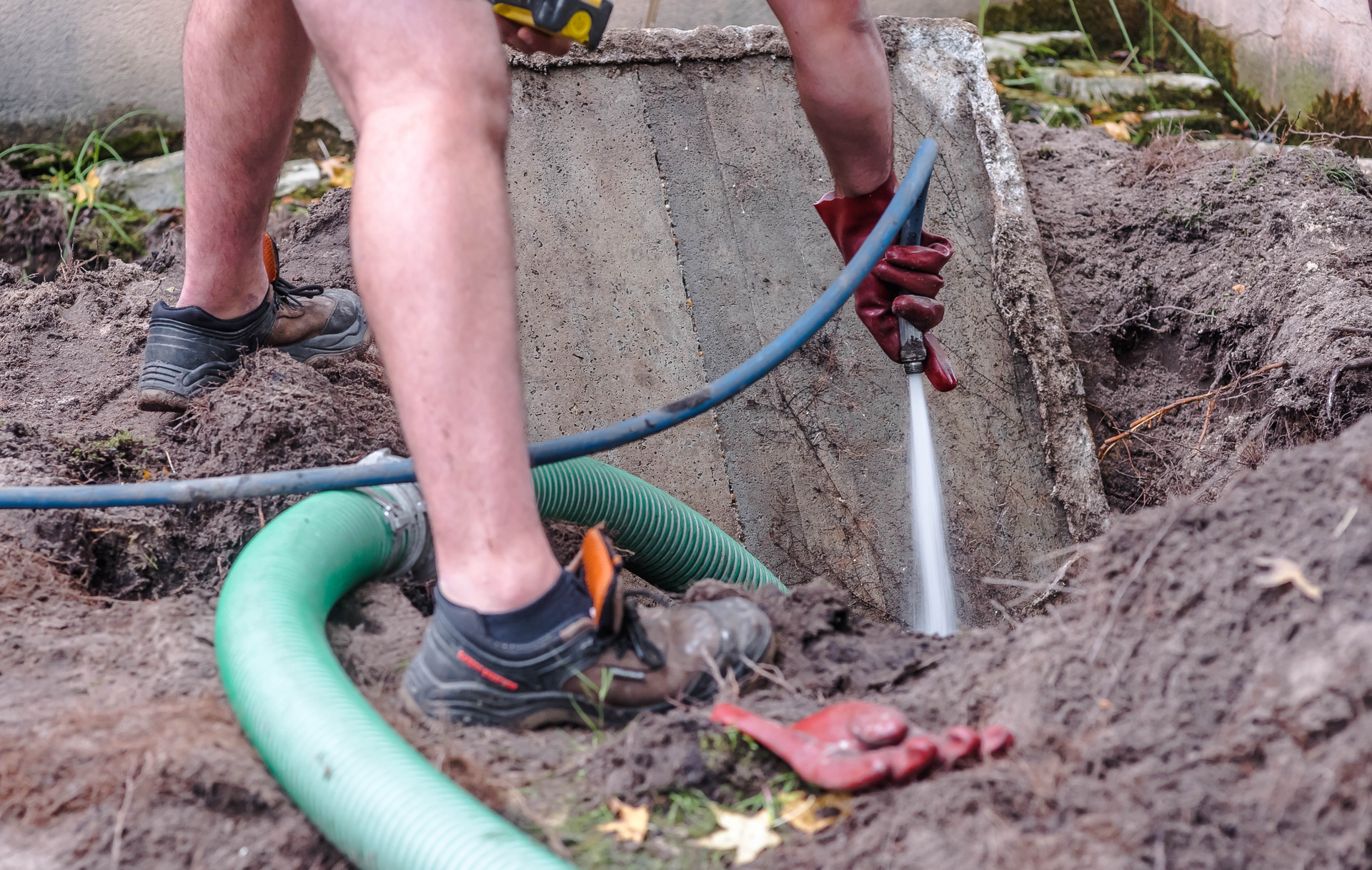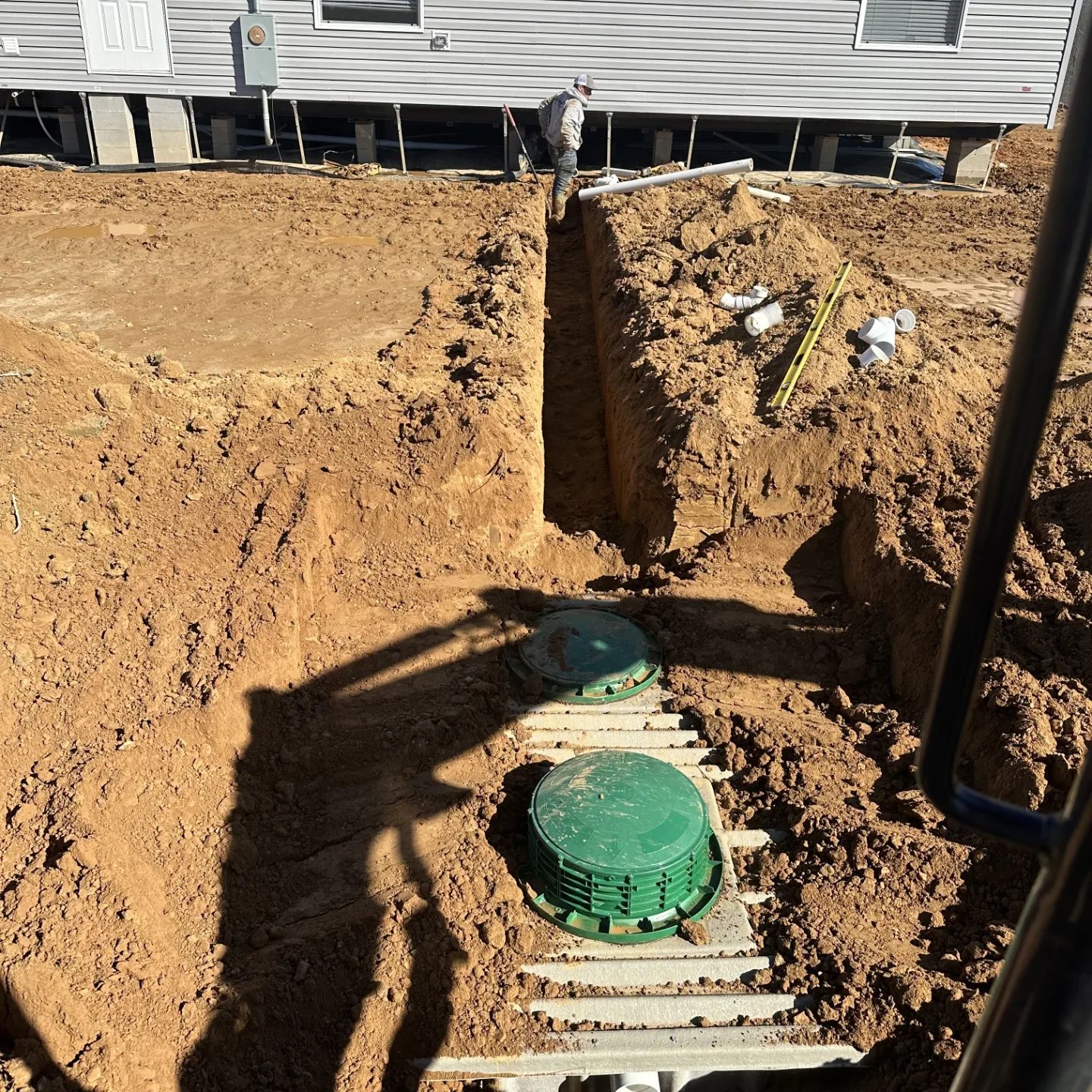What to Do When You Smell Septic Odors Inside Your Home: A Comprehensive Guide
December 18, 2023
What to Do When You Smell Septic Odors Inside Your Home: A Comprehensive Guide
Picture this: You're relaxing in your Oxford, MS, home, and suddenly, an unpleasant odor wafts through the air. It's a septic odor, and it's coming from inside your house. Septic odors indoors are not only unpleasant but also a potential sign of a more significant septic system issue. In this comprehensive guide, brought to you by Oxford Septic Service, we'll explore the steps you should take when you encounter septic odors inside your home.
Step 1: Don't Ignore It
The first and most crucial step when you smell septic odors indoors is not to ignore them. Septic odors can indicate a problem within your septic system that needs prompt attention. Ignoring the issue could lead to more extensive damage and costly repairs down the road.
Step 2: Ventilate the Area
If the odor is strong and overwhelming, ventilate the affected area immediately. Open windows and doors to allow fresh air to circulate, helping to dissipate the odor. Use fans to help with air circulation.
Step 3: Check for Common Culprits
Sometimes, septic odors inside the home can result from simple issues that you can address yourself. Check the following common culprits:
a. Dried Out P-Traps: In sinks, showers, and floor drains, there are P-traps that hold water to block sewer gases from entering your home. If a drain hasn't been used for a while, the P-trap water can evaporate, allowing odors to enter. Simply run water in these drains to refill the P-traps.
b. Toilet Wax Ring: A damaged or deteriorated toilet wax ring can allow septic odors to escape when flushing. If you notice water around the base of the toilet, it's a sign of a wax ring issue and should be replaced promptly.
Step 4: Schedule a Professional Inspection
If the septic odor persists after addressing common culprits or if you suspect a more significant problem, it's time to call in the professionals. Contact Oxford Septic Service to schedule a thorough inspection of your septic system. Professional technicians can identify the source of the odor and assess the overall health of your septic system.
Common Causes of Septic Odors Inside the Home
Understanding the potential causes of septic odors inside your home can help you and your septic service provider pinpoint the issue more effectively. Here are some common culprits:
1. Blocked Vent Pipe: The vent pipe on your roof allows sewer gases to escape. If it becomes blocked by debris or nesting animals, these gases can enter your home through drains or toilets.
2. Damaged Septic Tank Lid: A damaged or improperly sealed septic tank lid can release odors into your yard, which can then find their way into your home.
3. Clogs or Backups: A clogged drain line or sewer backup can force sewer gases back into your home through drain openings.
4. Leaking Sewer Line: A damaged or leaking sewer line can allow septic odors to permeate the soil around your home, eventually making their way inside.
The Role of Jetting in Odor Prevention
Septic jetting, or high-pressure water jetting, can play a crucial role in preventing septic odors from entering your home. Here's how:
1. Clearing Blockages: Jetting can clear blockages in your drain lines, ensuring wastewater flows freely and preventing backups that could lead to odors indoors.
2. Cleaning Vent Pipes: Technicians can use jetting to clean and clear vent pipes, ensuring that sewer gases can vent properly through the roof.
3. Maintaining System Health: Regular jetting as part of your septic system maintenance can help keep your system in peak condition, reducing the risk of odors and other issues.
In conclusion, when septic odors invade your home in Oxford, MS, it's essential to take action promptly. Ignoring the problem can lead to more significant issues down the line. By following these steps and enlisting the help of professionals like Oxford Septic Service, you can identify and address the source of the odors, ensuring a healthy and odor-free home. Remember, regular septic system maintenance, including jetting, is key to preventing septic odors from becoming a recurring problem.

Septic tank pumping is a crucial aspect of septic system maintenance that often goes overlooked by property owners. Regular pumping helps prevent costly repairs, prolongs the lifespan of the septic system, and protects the environment from contamination. In this guide, Oxford Septic Services shares valuable insights into the importance of routine septic tank pumping and its many benefits. Chapter 1: Understanding the Role of Septic Tank Pumping Overview of the septic tank pumping process and its significance in maintaining a healthy septic system Explanation of how septic tank pumping removes accumulated solids and sludge from the tank, preventing clogs and backups Chapter 2: Preventing Costly Repairs and System Failures Discussion of the potential consequences of neglecting septic tank pumping, including system backups, drain field damage, and groundwater contamination Exploration of the financial implications of septic system repairs and replacements compared to the relatively low cost of routine pumping Chapter 3: Extending the Lifespan of Your Septic System Explanation of how regular septic tank pumping helps prolong the lifespan of the septic system by reducing stress on system components and preventing premature failure Discussion of the correlation between routine pumping and the overall health and longevity of the septic system Chapter 4: Protecting the Environment and Public Health Examination of the environmental and public health risks associated with untreated wastewater discharge from poorly maintained septic systems Explanation of how routine septic tank pumping helps mitigate these risks by preventing groundwater contamination and protecting local water sources Chapter 5: Maintaining Property Value and Resale Potential Exploration of the impact of a well-maintained septic system on property value and resale potential Discussion of how routine septic tank pumping demonstrates responsible property ownership and can increase buyer confidence during real estate transactions Chapter 6: Ensuring Regulatory Compliance Overview of local regulations and requirements regarding septic system maintenance and pumping frequency Explanation of how routine septic tank pumping helps property owners remain in compliance with regulatory standards and avoid potential fines or penalties Chapter 7: Best Practices for Scheduling Septic Tank Pumping Recommendations for establishing a regular pumping schedule based on factors such as household size, water usage, and septic system capacity Tips for working with professional septic service providers like Oxford Septic Services to schedule timely and efficient pumping services Conclusion: Routine septic tank pumping is an essential aspect of responsible septic system ownership, offering numerous benefits for property owners, the environment, and public health. By understanding the importance of routine pumping and working with trusted professionals like Oxford Septic Services, property owners can ensure the long-term performance and reliability of their septic systems.

Installing a septic system is a critical step in ensuring proper wastewater management for residential and commercial properties. However, the installation process can be complex and requires careful planning and execution. In this comprehensive guide, Oxford Septic Services provides essential information and expert tips for homeowners and property owners considering septic system installation. Chapter 1: Understanding the Basics of Septic Systems Overview of septic systems and their components, including the septic tank, drain field, and distribution box Explanation of how septic systems function to treat and dispose of wastewater on-site, without access to a municipal sewer system Chapter 2: Assessing Site Conditions and Permitting Requirements Guidance on assessing soil conditions, topography, and site suitability for septic system installation Explanation of the permitting process and regulatory requirements for septic system installation, including obtaining necessary permits and approvals from local authorities Chapter 3: Designing the Septic System Overview of the steps involved in designing a septic system, including determining system size, layout, and location Discussion of factors to consider when designing a septic system, such as property size, soil type, and groundwater levels Chapter 4: Selecting and Installing Septic System Components Explanation of the different types of septic tanks, drain fields, distribution boxes, and other system components available for installation Step-by-step instructions for properly installing septic system components, including excavation, tank placement, piping installation, and backfilling Chapter 5: Ensuring Proper System Ventilation and Plumbing Connections Importance of providing adequate ventilation for the septic system to prevent the buildup of harmful gases, such as methane and hydrogen sulfide Guidelines for properly connecting plumbing fixtures, such as toilets, sinks, and showers, to the septic system to ensure efficient wastewater flow Chapter 6: Conducting Final Inspections and Testing Overview of the final inspection and testing process to ensure that the septic system meets all regulatory requirements and functions properly Explanation of common tests conducted during the final inspection, such as hydraulic load testing, dye testing, and soil percolation testing Chapter 7: Maintaining and Caring for Your New Septic System Recommendations for ongoing maintenance and care of the newly installed septic system, including routine pumping, inspection, and monitoring Tips for avoiding common pitfalls and ensuring the long-term reliability and performance of the septic system Conclusion: By following the guidelines and expert tips provided in this guide, property owners can navigate the septic system installation process with confidence. With careful planning, proper design, and professional installation by Oxford Septic Services, property owners can ensure the reliable operation and longevity of their septic systems for years to come.
